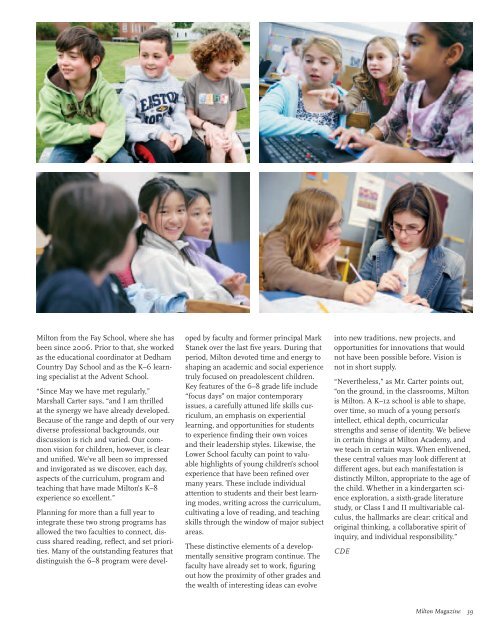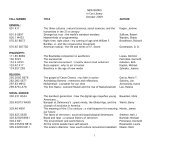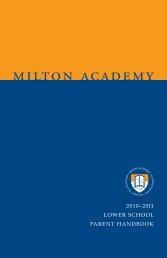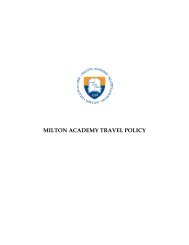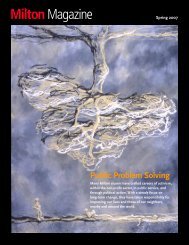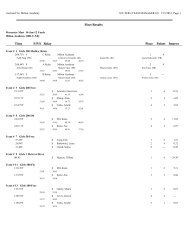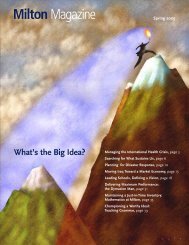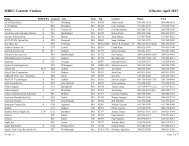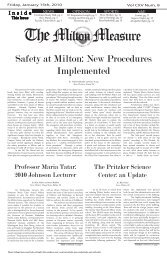Milton Magazine - Milton Academy
Milton Magazine - Milton Academy
Milton Magazine - Milton Academy
- No tags were found...
Create successful ePaper yourself
Turn your PDF publications into a flip-book with our unique Google optimized e-Paper software.
<strong>Milton</strong> from the Fay School, where she hasbeen since 2006. Prior to that, she workedas the educational coordinator at DedhamCountry Day School and as the K–6 learningspecialist at the Advent School.“Since May we have met regularly,”Marshall Carter says, “and I am thrilledat the synergy we have already developed.Because of the range and depth of our verydiverse professional backgrounds, ourdiscussion is rich and varied. Our commonvision for children, however, is clearand unified. We’ve all been so impressedand invigorated as we discover, each day,aspects of the curriculum, program andteaching that have made <strong>Milton</strong>’s K–8experience so excellent.”Planning for more than a full year tointegrate these two strong programs hasallowed the two faculties to connect, discussshared reading, reflect, and set priorities.Many of the outstanding features thatdistinguish the 6–8 program were developedby faculty and former principal MarkStanek over the last five years. During thatperiod, <strong>Milton</strong> devoted time and energy toshaping an academic and social experiencetruly focused on preadolescent children.Key features of the 6–8 grade life include“focus days” on major contemporaryissues, a carefully attuned life skills curriculum,an emphasis on experientiallearning, and opportunities for studentsto experience finding their own voicesand their leadership styles. Likewise, theLower School faculty can point to valuablehighlights of young children’s schoolexperience that have been refined overmany years. These include individualattention to students and their best learningmodes, writing across the curriculum,cultivating a love of reading, and teachingskills through the window of major subjectareas.These distinctive elements of a developmentallysensitive program continue. Thefaculty have already set to work, figuringout how the proximity of other grades andthe wealth of interesting ideas can evolveinto new traditions, new projects, andopportunities for innovations that wouldnot have been possible before. Vision isnot in short supply.“Nevertheless,” as Mr. Carter points out,“on the ground, in the classrooms, <strong>Milton</strong>is <strong>Milton</strong>. A K–12 school is able to shape,over time, so much of a young person’sintellect, ethical depth, cocurricularstrengths and sense of identity. We believein certain things at <strong>Milton</strong> <strong>Academy</strong>, andwe teach in certain ways. When enlivened,these central values may look different atdifferent ages, but each manifestation isdistinctly <strong>Milton</strong>, appropriate to the age ofthe child. Whether in a kindergarten scienceexploration, a sixth-grade literaturestudy, or Class I and II multivariable calculus,the hallmarks are clear: critical andoriginal thinking, a collaborative spirit ofinquiry, and individual responsibility.”CDE<strong>Milton</strong> <strong>Magazine</strong> 39


